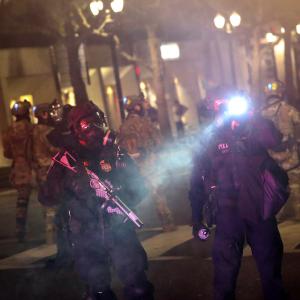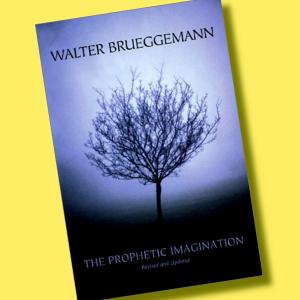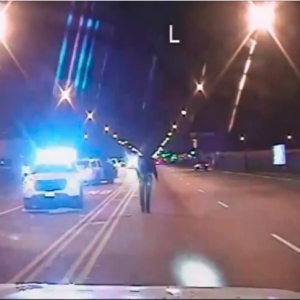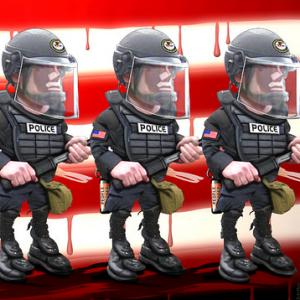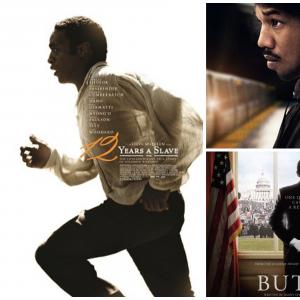
Otis Moss III is senior pastor of Trinity United Church of Christ in Chicago. His newest book, Blue Note Preaching in a Post-Soul World: Finding Hope in an Age of Despair, was released in 2015.
Posts By This Author
Finding Our Way in Post-Trump America
PEOPLE ALL OVER the United States, and indeed the world, flooded city streets en masse when media outlets called the presidential election for Joe Biden on the fourth day after Election Day in November, four days of a nation holding its breath. In a year marked with repeated tragedy, a collective sigh of relief found form in marching bands and dance parties. Eight months into social isolation brought on by the coronavirus, many felt, if only for a moment, united. That was on a Saturday.
Then came Sunday. The prophetic word from pulpits across America: There can be no unity without justice. As of this writing, we know that more than 73 million Americans voted for Donald Trump—neighbors, family, members of our churches. We are a divided nation, a divided church. We reckon with this reality even as we look forward with hope to a new year and a different administration. As we begin to mend our social fabric and heal from the compounded traumas of 2020, Sojourners invited leaders from various sectors to offer their thoughts on the way forward. —The Editors
How Will Christians Answer This Moment in History?
The writer, James Baldwin, stated in 1962, “It is, alas, the truth that to be an American writer today means mounting an unending attack on all that Americans believe themselves to hold sacred.” It is the truth that to be a person of faith in America today, is to recognize that America desires Jesus slogans over morally grounded Jesus-inspired action.
Wakanda Forever
How do we take the limits off the imagination of black children in Chicago? Part of the answer is to create more Afrofuturism. Let our children dream, and dream big.
What ‘The Prophetic Imagination’ Has Meant to Me
Five Christian leaders on the influence of Walter Brueggemann’s classic book in their life and ministry.
Five Christian leaders on the influence of Walter Brueggemann’s classic book in their life and ministry.
The Blue Note Gospel
To be prophetic preachers, we must understand the blues.

LeksusTuss / Shutterstock
[Editor's note: This article is adapted with permission from Otis Moss III's book Blue Note Preaching in a Post-Soul World: Finding Hope in an Age of Despair, published by Westminster John Knox Press, 2015.]
IF WE ARE to reclaim the best of the preaching tradition, then we must learn what I call the blue note gospel. Before you get to your resurrection shout, you must pass by the challenge and pain called Calvary.
What is this thing called the blues? It is the roux of black speech, the backbeat of American music, and the foundation of black preaching. Blues is the curve of the Mississippi, the ghost of the South, the hypocrisy of the North. Blues is the beauty of bebop, the soul of gospel, and the pain of hip-hop.
Before we can speak of the jazz mosaic or the hip-hop vibe for postmodern preaching, we must wrestle with the blues. In his song “Call It Stormy Monday,” T-Bone Walker laments how bad and sad each day of the week is, but “Sunday I go to church, then I kneel down and pray.”
Walker’s song unintentionally lifted up the challenge that the blues placed before the church and that black religiosity still seeks to solve. “Stormy Monday” forces the listener to reject traditional notions of sacred and secular. The pain of the week is connected to the sacred service of Sunday. There is no strict line of demarcation between the existential weariness of a disenfranchised person of color and the sacred disciplines of prayer, worship, and service to humanity.
This blue note is a challenge to preaching and to the church. Can preaching recover a blues sensibility and dare speak with authority in the midst of tragedy? America is living stormy Monday, but the pulpit is preaching happy Sunday. The world is experiencing the blues, and pulpiteers are dispensing excessive doses of non-prescribed prosaic sermons with severe ecclesiastical and theological side effects.
The church is becoming a place where Christianity is nothing more than capitalism in drag. In his book Where Have All the Prophets Gone? Marvin McMickle, president of Colgate Rochester Crozer Divinity School, asks what happened to the prophetic wing of the church. Why have we emphasized a personal ethic congruent with current structures and not a public theology steeped in struggle and weeping informed by the blues? McMickle’s book is instructive for us. He demonstrates the focus on praise (or the neo-charismatic movements) coupled with false patriotism—enhanced by the reactionary development of the tea party, the election of President Barack Obama, and personal enrichment preaching (neo-religious capitalism informed by the market, masquerading as ministry).
The blues has faded from the Afro-Christian tradition, and the tradition is now lost in the clamor of material blessings, success without work, prayer without public concern, and preaching without burdens. The blues sensibility, not just in preaching but inherent in American culture, must be recovered. We must regain the literary sensibility of Flannery O’Connor, Zora Neale Hurston, Ernest Hemingway, and James Baldwin; the prophetic speech of Martin Luther King Jr., William Sloane Coffin, and Ella Baker; along with the powerful cultural critique of Jarena Lee and Dorothee Sölle.
The blues, one of America’s unique and enduring art forms, created by people kissed by nature’s sun and rooted in the religious and cultural motifs of West Africa, must be recovered. The roots are African, but the compositions were forged in the humid Southern landscape of cypress and magnolia trees mingling with Spanish moss. It is more than music. The blues is a cultural legacy that dares to see the American landscape from the viewpoint of the underside.
For the Families With an Empty Seat at the Table
People of Faith Should Lead the Dismantling of a Corrupt System
An 80s song told us “video killed the radio star.” The music was catchy and referred to the varied attitudes we all had about technology. What is this? What would we do now? Fast-forward 35 years, and videos are the very technology for which we are so thankful.
Video changes everything.
When the Chicago Police Department released the dash-cam video of 17-year-old Laquan McDonald being shot 16 times by one of their own, the city braced for disruption. When we learned of the $5 million settlement to the McDonald family that stipulated the video remain confidential, the city braced for disruption. When residents discovered that footage from a nearby security camera had been deleted by Chicago police, the city braced for disruption. Mayor Emanuel and his team had seen the video, and were afraid of the public reaction.
Aunt Roma's Lessons for Eco-Living
Years ago as a child growing up in Cleveland, Ohio, I was befriended by a wonderful family around the corner from my home. The patriarch of the family, Edward Blunt Sr., was a hard-working executive for a telecommunication company; the matriarch, Roma Blunt, lovingly called Aunt Roma, was a consultant for several local educational institutions; and their son, Ed Jr., became one of my best friends and adopted brother.
Ed and I played sports, shared the same birthday, and graduated from high school and college together. Ed's family provided a unique gift for the young men in our neighborhood. As a result of their southern roots and deep-rooted village values, they believed adults — especially adults of African descent — had a responsibility to aid and assist in the development of young men in the community.
At least weekly, a gang of musty, sweaty, boisterous young men crowded into the Blunt household to take part in a ritual of culinary excellence provided by Aunt Roma. In this house we did not own, pay for, or live in, we witnessed the southern artistry and gastric creativity produced with a palette of collard greens, gumbo, cornbread, sweet potatoes, macaroni and cheese, fried okra, and fish on the canvas of our senses. The white house on Green Road became our hangout, respite, and my second home. Since I lived geographically closest to the Blunts’ home, I found myself at their address more frequently than other "brothers" in our network.
Upon one of my routine visits after finishing another amazing meal, Aunt Roma passed on a special gift. She handed me a key to the home. She stated with matter-of-fact ease, "Otis, you're over here enough, you might as well have a key."
After I said thank you, she began to reemphasize the rules of the house.
"You are always welcome here … you are welcome to eat, rest, and relax ... I trust you, and as long as you abide by the rules of the house and your parents are aware of where you are, this door is always open to you."
I was given access to the Blunts’ home because of my relationship with their son. I was given access to a home I did not create, build, or purchase. Because of my relationship with their son, I was given access to an environment I did not create.
War on Drugs. War on Terror. War on Us?
As America began to gear up for its incredibly wasteful (more than $40 trillion since 1972) and utterly futile “War on Drugs,” there were three critical federal actions that contributed to our current vastly over-militarized police forces.
In 1981, the Military Cooperation with Law Enforcement Act was passed. This law authorized military collaboration with civilian law enforcement agencies and dramatically expanded the Army’s participation in counterdrug efforts and included arming and training of local police with military grade weapons, free of charge, at the discretion of the Secretary of Defense.
Then, in 1984, Congress passed the Comprehensive Crime Control Act, supposedly to assist in controlling the crack cocaine infusion in urban communities. This law, tied to a civil forfeiture provision, allows law enforcement to seize property without a conviction, or even charges being levied, if a person is suspected of illegal drug activity.
Finally, in the 1990 National Defense Authorization Act (each year this bill funds our military) there was included a provision — “Section 1208” — that allowed the Secretary of Defense to transfer weapons and ammunition that was “suitable for use by such agencies in counter-drug activities.” This law was supposed to give police the firepower needed to “effectively” execute the Drug War. In the 10 years that followed, thousands of tanks, helicopters, grenade launchers, and assault rifles were granted to municipal police forces.
But the militarization of our police forces was not yet complete.
Enter the “War on Terror.”
A Biblical Review of 'Noah'
Biblical themes have been used throughout history to share the universal struggle of humanity; temptation, rebellion, coming of age, the degradation of the moral compass, courage in the face of humanity, and of course, faith.
William Shakespeare uses biblical elements in his plays. We witness in his writings themes highlighted in David's narrative, Adam and Eve's story, and Cain and Abel's tragedy. These stories are central to the Western canon. We cannot get away from these themes and stories, for they rest in the consciousness of our culture.
The film Noah, directed by Darren Aronofsky, is a daring, powerful, and imaginative retelling of the Noah story. Aronofsky takes the central elements of the biblical narrative and expands the story, as artists are called to do, to allow the audience to witness, not a historical world, but a metaphorical universe where the choices of humanity disrupt the sacred divine rhythm of creation.
Shifting the Frame
U.S. cinema has been an enforcer of our racialized imagination—but that’s changing.
“CINEMA IS a matter of what’s in the frame and what’s out.” With this, Martin Scorsese, one of the greatest living U.S. directors, gives us a simple window to understand the power of cinema. What is in the frame is a choice by the filmmaker, and what is not highlighted is also a choice.
People of color, literally and metaphorically, have struggled to be included in the frame and fought to move from the background to the foreground of the cinematic imagination.
The U.S. cinema, historically, has been the vanguard of stereotypes and the enforcer of our racialized imagination. Our view of women, people of color, and ethnicities define and are expanded by the power of cinema.
D.W. Griffith’s 1915 silent film The Birth of a Nation was a revisionist history of the Civil War and Reconstruction that defined the Ku Klux Klan as the hero of the story and used white actors in blackface to frame black people as a threat to white society. This film, while not seen by the majority of filmgoers, set into motion the racial constructs we now view as normative. Black men, for example, have often been viewed in cinematic history as ethically dubious, highly sexualized, violent, or childlike comic characters.
These stereotypes created by the filmmaker’s imagination became, in the minds of many in the U.S., a historical fact. Cinema helped reinforce myths and arbitrary prejudices not based on cultural differences but created to protect economic interests of white Southerners who feared black labor.
'12 Years a Slave' Creates 'New Space for Antebellum Storytelling'
Since the production of The Birth of a Nation, Hollywood has lived with the mythic world imagined by artists who view the lives of people of color as footnotes and props. From Gone With The Wind to Django Unchained, the most difficult type of film for Hollywood to get right is the antebellum story of people of color.
Django, for example used the archetypes designed by Hollywood — “Mammy, Coon, Tom, Buck, and Mulatto,” to quote film historian, Donald Bogle — and exploit them in order to create a hyper-exploitation Western fantasy, with slavery as the backdrop. The film is a remix and critique of exploitation clichés, not a historical drama seeking to illuminate our consciousness. Django is a form of visual entertainment where enlightenment might happen through a close reading of the film. All the archetypes remain in place. Nothing is exploded or re-imagined, only remixed to serve the present age.
Steve McQueen’s 12 Years A Slave, on the other hand, sits within and outside the Hollywood fantasy of antebellum life. I say it sits within, because the archetypes forged by the celluloid bigotry of D.W. Griffith are present. But, in the hands of the gifted auteur, Steve McQueen, they are obliterated and re-imagined as complex people caught in a system of evil constructed by the immorality of markets, betrothed to mythical, biological, white supremacy.
The Growing Wealth Gap
The heart of our faith calls us to attack poverty, the "cruel thief of dreams."
IN AMERICA, WE honor the ideal of equality and the myth of equal opportunity—but the secret we refuse to acknowledge is the debilitating, dehumanizing effects of poverty. As a pastor serving the South Side of Chicago, I witness firsthand the pain that poverty inflicts upon our congregation and the scars it leaves on the most vulnerable: children. Faith in Christ should mean a commitment to the poor.
There is a growing wealth gap between African-American households and white households. A Pew research study, for example, shows the dramatic change between 2005 and 2009. In 2005, the typical white household had a net worth of $134,992 (in 2009 dollars), while the typical black household had a net worth of $12,124—9 cents for each dollar the white household owned. By 2009, that fell to 5 cents, as the typical black household saw its net worth drop more than 53 percent, as compared to a drop of 16 percent for the average white household. And, alarmingly, 35 percent of black households in 2009 had a zero or negative net worth.
A few seek to blame this damaging downward trend on the current administration's policies. This is unfair and incorrect. Black families have traditionally built wealth through homeownership, but since the mid-1990s we have witnessed a dramatic increase in bank mergers—and predatory lending. Local banks, now owned by large corporate institutions with little interest in community investment, increasingly close branches in poor communities, then check-cashing establishments fill the void in financial services. At the same time, our nation faces the loss of manufacturing and the dismantling of organized labor. The triple threat of regressive economic policy, unchecked expansion of large, unaccountable financial institutions, and the economic crisis of 2008 devastated parts of cities across the nation: Chicago, Cleveland, Detroit, Atlanta, New York, Buffalo, Flint, and many others.

